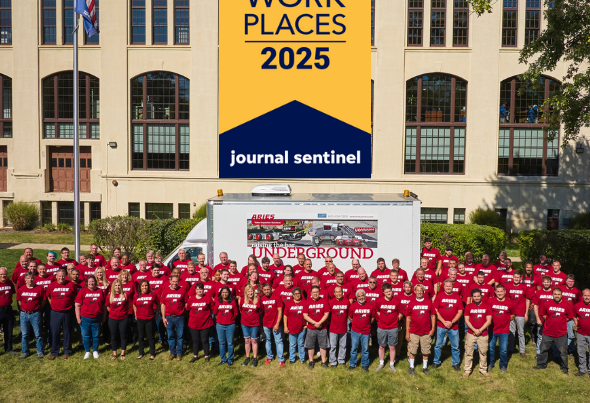Sewer inspections and rehabilitation are becoming a bigger priority for municipalities. The current state of wastewater infrastructure in the United States is concerning due to years of underinvestment, leading to aging systems that struggle to meet modern demands. Many wastewater systems are outdated, with some reaching or surpassing their designed capacity, resulting in issues like untreated wastewater overflows and failures that threaten public health and the environment.
Municipalities are increasingly recognizing the importance of maintaining and rehabilitating their underground infrastructure. This effort is critical for ensuring the safety and well-being of residents and the environment.
Below are four compelling reasons why municipalities should invest in regular sewer inspections and rehabilitation:
1) Sewer Inspections and Maintenance Are Key for Infrastructure Longevity
 Regular inspections allow municipalities to stay ahead of potential failures by identifying and addressing issues early on. This proactive approach can catch minor cracks, corrosion, or blockages before they escalate into significant breaks or collapses, which are far more expensive to fix.
Regular inspections allow municipalities to stay ahead of potential failures by identifying and addressing issues early on. This proactive approach can catch minor cracks, corrosion, or blockages before they escalate into significant breaks or collapses, which are far more expensive to fix.
Routine sewer assessments using CCTV inspection technology provide clear visuals of pipe conditions, allowing for precise and targeted repairs. This process extends the life of the sewer infrastructure by reducing the need for emergency interventions, which can be disruptive and costly. In the long run, maintaining infrastructure through regular inspections can lead to considerable savings on both short-term fixes and long-term replacements.
2) Environmental Protection
 Aging sewer systems are not just a financial burden—they can also have a detrimental impact on the environment. Groundwater inflow and infiltration (I&I) can cause several environmental issues:
Aging sewer systems are not just a financial burden—they can also have a detrimental impact on the environment. Groundwater inflow and infiltration (I&I) can cause several environmental issues:
- Sewage Overflows: Excessive I&I can overwhelm sewer systems, leading to sanitary sewer overflows (SSOs). These overflows can spill harmful pathogens and contaminants into rivers, lakes, and streams, degrading water quality and ecosystems.
- Water Pollution: Pollutants like nitrogen and phosphorus from overflows contribute to algal blooms and oxygen depletion in water bodies, which can lead to the decline of aquatic life.
- Groundwater Contamination: Untreated sewage from damaged pipes can leach into groundwater supplies, contaminating drinking water sources with bacteria and viruses.
- Increased Energy Consumption: Excessive water entering the system means treatment plants need to work harder, leading to higher energy use and more strain on municipal resources.
By conducting regular inspections, municipalities can identify and mitigate I&I issues, helping to protect the environment while reducing energy consumption and operational costs.
3) Economic Considerations for Prioritizing Sewer Inspections and Rehabilitation
The economic implications of poorly maintained sewer systems are extensive, impacting municipalities on multiple fronts. Investing in inspections can prevent costly system failures while ensuring that existing infrastructure operates efficiently:
- Lower Treatment Costs: When inflow and infiltration are reduced, the volume of water that treatment plants need to process decreases, leading to significant savings on energy and chemical treatments.
- Infrastructure Preservation: Sewer systems overloaded by I&I experience accelerated wear and tear, necessitating more frequent repairs. By addressing these issues early, municipalities can avoid costly pipe replacements or extensive rehabilitation.
- Business Continuity: Sewage overflows and backups in commercial districts can cause businesses to close temporarily, resulting in lost revenue for both the business owners and the municipality. Maintaining reliable sewer systems minimizes the risk of disruptions.
- Property Values: A well-maintained sewer system enhances the appeal of a city or town, attracting new businesses, residents, and investors. On the other hand, frequent sewer issues can drive away potential development and lower property values.
4) Urban Planning and Development
As urban areas expand, it is essential for municipalities to understand the capacity and condition of their current sewer infrastructure. Sewer inspections provide valuable data for planning future developments. For example, cities need to know whether their existing infrastructure can handle the demands of new housing developments or commercial areas.
 With the data from regular inspections, municipalities can make informed decisions on where to allocate resources, plan for infrastructure expansions, or prioritize rehabilitation efforts. This strategic approach to urban planning ensures that cities can grow without overburdening their aging sewer systems.
With the data from regular inspections, municipalities can make informed decisions on where to allocate resources, plan for infrastructure expansions, or prioritize rehabilitation efforts. This strategic approach to urban planning ensures that cities can grow without overburdening their aging sewer systems.
Municipalities that invest in regular sewer inspections and rehabilitation stand to gain significantly from improved infrastructure longevity, environmental protection, economic savings, and better urban planning. By taking a proactive approach to maintaining underground infrastructure, cities can avoid expensive emergencies, protect their natural resources, and ensure their communities remain healthy and vibrant.
Aries Industries is proud to offer comprehensive solutions for municipalities looking to invest in sewer inspections. Our cutting-edge CCTV sewer inspection cameras, pipeline inspection systems, grout trucks, and pipeline rehabilitation cutter systems can help you take control of your underground infrastructure needs. Whether you’re looking to perform regular maintenance or undertake a major rehabilitation project, we’re here to provide the expertise and equipment to get the job done right. Together we can raise the bar UNDERGROUND.
Contact us today to learn more about how we can help your municipality improve its wastewater infrastructure.














